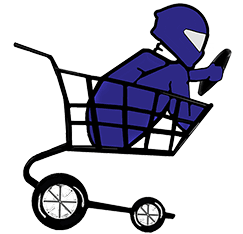
Small consumer packaged goods (CPG) brands often face significant challenges when trying to have their products sold in a grocery store. These challenges can range from competition with larger, more established brands to meeting the demands of retailers and consumers. In this article, we will explore some of the challenges small CPG brands face when trying to get their products on the shelves of a grocery store.
1. Competition with Larger Brands
One of the primary challenges that small CPG brands face is competition with larger, more established brands. Larger brands often have the advantage of scale, brand recognition, and established relationships with retailers, making it difficult for smaller brands to break through. These larger brands often have more significant marketing budgets, which they can use to promote their products and secure prominent shelf space in the store.
2. Limited Resources
Another challenge small CPG brands face is limited resources. Small brands often do not have the same resources as larger brands, such as marketing budgets, supply chain networks, or distribution networks. As a result, they may struggle to get their products to market, or they may not have the resources to compete with larger brands for premium shelf space in stores.
3. Meeting Retailer Demands
Grocery stores have specific requirements that CPG brands must meet to have their products sold in-store. Small brands may struggle to meet these requirements, such as packaging regulations, barcoding, and labeling requirements. Additionally, retailers may have specific demands regarding product pricing, payment terms, and promotions that small brands may find challenging to meet.
4. Consumer Awareness
Consumer awareness is another challenge that small CPG brands face when trying to get their products sold in a grocery store. Consumers are often more likely to purchase products from brands they recognize and trust. Smaller brands may struggle to generate awareness and build trust among consumers who may be unfamiliar with their products.
5. Distribution Channels
Distribution channels are a crucial factor in the success of a CPG brand. Small brands may struggle to establish distribution networks, making it difficult to get their products into stores. Additionally, smaller brands may not have the same bargaining power as larger brands, making it difficult to negotiate favorable terms with distributors.
In conclusion, small CPG brands face significant challenges when trying to have their products sold in a grocery store. These challenges range from competition with larger brands to meeting the demands of retailers and consumers. Despite these challenges, small brands can overcome these obstacles by focusing on the most important challenges first. Building brand awareness is the most important obstacle to overcome. Advertising on the Speed Shopping List App has been very effective for many small to mid sized CPG brands seeking brand recognition. Small CPG brands must also focus on establishing relationships with retailers and distributors, and leveraging their unique selling points to differentiate themselves from their larger competitors.
